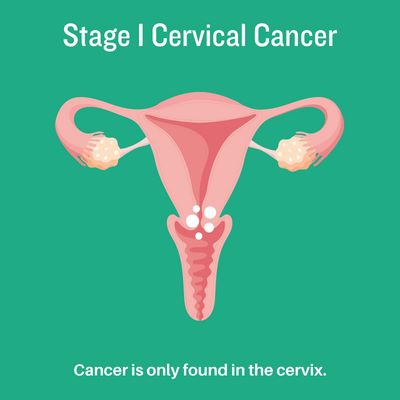Welcome to Our Blogs
INCREASE YOUR AWARENESS
Follow along as we share valuable knowledge and content to enrich and empower your everyday life.

Stages of Cervical Cancer
Stages of Cervical Cancer
The severity and stage of the cervical cancer prognosis often depend on how large the growth of it is, if it has spread, and the patient’s general health. It is important to know the stage of cervical cancer to devise the best course of treatment.
Stage I Cervical Cancer

Cervical cancer has formed but is only found in the cervix. This stage is divided into stages IA and IB and further subdivided into IA1, IA2, IB1, IB2, and IB3 depending on the size and deepest point of the tumour invasion.
Stage IA: A very small amount of cancer that can only be viewed under a microscope is found in the cervix tissues.
Stage IA1: The deepest point of the tumour is less than 3 millimetres.
Stage IA2: The deepest point of the tumour is more than 3 but less than 5 millimetres.
Stage IB1: The tumour is less than 2 centimetres, and its deepest point is more than 5 millimetres.
Stage IB2: The tumour is larger than 2 centimetres but less than 4 centimetres.
Stage IB3: The tumour is larger than 4 centimetres.
Stage II Cervical Cancer

Cervical cancer has spread to the upper two-thirds of the vagina or to the tissue around the uterus. Stage II is divided into IIA and IIB and further subdivided into IIA1, IIA2, and IIB depending on how far the cancer has spread.
Stage IIA: Cancer has spread from the cervix to the upper two-thirds of the vagina but has not spread to the tissue around the uterus.
Stage IIA1: The tumour is less than 4 centimetres.
Stage IIA2: The tumour is larger than 4 centimetres.
Stage IIB: Cancer has spread from the cervix to the tissue around the uterus.
Stage III Cervical Cancer

Cervical cancer has spread to the lower third of the vagina and/or to the pelvic wall, and/or has caused kidney problems, and/or involves lymph nodes. This stage is subdivided based on how far the cancer has spread.
Stage IIIA: Cancer has spread to the lower third of the vagina but has not spread to the pelvic wall.
Stage IIIB: Cancer has spread to the pelvic wall; and/or the tumour has become large enough to block one or both ureters or has caused one or both kidneys to get bigger or stop working.
Stage IIIC: Divided into stages IIIC1 and IIIC2, depending on the spread of cancer to the lymph nodes.
Stage IIIC1: Cancer in the lymph nodes in the pelvis.
Stage IIIC2: Cancer in the lymph nodes in the abdomen near the aorta.
Stage IV Cervical Cancer

Cervical cancer has spread beyond the pelvis or has spread to the lining of the bladder or rectum or has spread to other parts of the body. Stage IV is also referred to as metastatic cancer which occurs when cancer cells travel through the lymphatic system or blood and form tumours in other parts of the body.
This stage is subdivided into stages IVA and IVB, depending on where the cancer has spread.
Stage IVA: Cancer has spread to nearby pelvic organs such as the bladder or rectum.
Stage IVB: Cancer has spread to other parts of the body such as the liver, lungs, bones, or distant lymph nodes.
Sources:
Cancer Council. (2023). Cervical Cancer.
https://www.cancer.org.au/cancer-information/types-of-cancer/cervical-cancer
National Cancer Institute. (2022). Cervical Cancer Stages. https://www.cancer.gov/types/cervical/stages
@ Copyright 2026 - Special Envoy for the Development of Families & Children| All rights reserved

